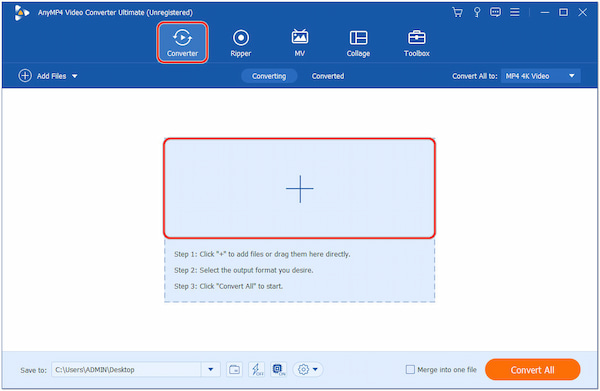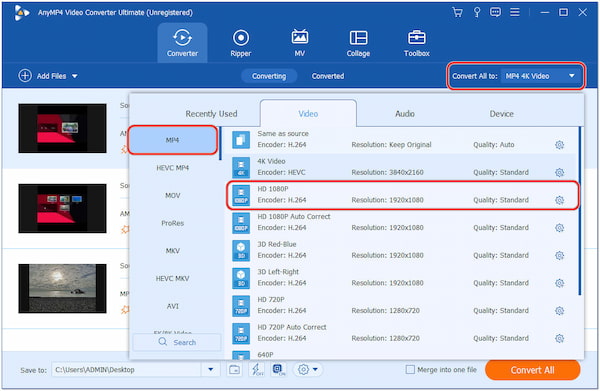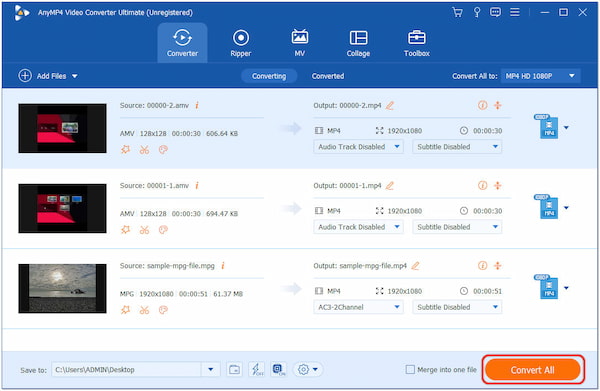Social media has become a powerful platform for sharing videos and engaging with a wide audience. However, one common frustration that content creators often encounter is when their videos get stuck at the 99% processing mark. This issue can be incredibly frustrating, delaying the upload and preventing the video from reaching its intended viewers. In this post, we will delve into the reasons behind this problem and provide effective solutions to help you overcome the social media video processing stuck at 99% hurdle. Continue reading this post to learn more details!

Social media platforms like Twitter, YouTube, TikTok, Instagram, and Facebook video processing issues can occur due to various factors, including these potential reasons:
Each platform has specific requirements for video codecs. For instance, if the Twitter video upload is stuck at 99%, the processing system might encounter difficulties decoding or transcoding the video due to an unsupported codec. It can result in video processing getting stuck at 99%. Ensure that the video is encoded using a codec compatible with the platform.
| YouTube | TikTok | |||
|---|---|---|---|---|
| MP4, MOV | H.264 | 32×32 pixels (minimum), 1920×1200 pixels (maximum) | 40 fps or below | 5-25 Mbps for higher-resolution videos |
| MP4, MOV | H.264, VP9 | 1080p (minimum), 1440p or 2160p (4K) for higher quality | 24, 25, 30, 48, 50, or 60 fps | VBR with 8-12 Mbps for 1080p videos |
| MP4, MOV | H.264 | 720p or higher | 30 fps or below | 2-4 Mbps, but can go up to 8 Mbps for higher-quality videos |
| MP4 | H.264, MPEG-4 | 720p (recommended), 1080p (maximum) | 30 fps or below | 2-4 Mbps |
| MP4, MOV | H.264 | 720p (recommended), 1080p (maximum) | 30 fps or below | 3-5 Mbps |
Aside from the codec-related issues, video processing is taking longer than expected because of video format or metadata errors. If the video file has incorrect or missing metadata or contains elements not recognized by the processing system, it can lead to the video getting stuck. Ensure that the video file is correctly formatted and has accurate metadata.
YouTube videos are stuck on processing due to maximum length or file size restrictions. Social media platforms, including YouTube, often have limitations on the videos that can be uploaded. If the video exceeds these limits, the processing system might struggle to handle it. Make sure that the video meets the required length and file size adjustments.
Why is my TikTok video taking so long to process? During high user activity or heavy server load, the video processing system might experience congestion. It can lead to delays in processing, including the video getting stuck at 99%. Server congestion occurs due to a high volume of uploads or general system maintenance activities.
Does the “video is still processing, try again later” messages appear during uploading? If yes, it is because of unstable or slow internet connections. If there are interruptions or fluctuations in the network connection while uploading the video, it can cause the processing to stall. Ensure you have a reliable connection when uploading videos.
After checking the potential reasons why social media platforms like Twitter, YouTube, Facebook, TikTok, and Instagram keep video processing, it would be best if you consider these factors to fix your video processing issues:
If the Twitter video is stuck at 99 processing, ensure that the video you’re trying to upload meets the requirements. Review the specific codec requirements of the social media platform where you upload your video. Ensure that the video is encoded using the recommended codec and settings.
A codec is a technology used to encode and decode digital video files. Use a different encoding if you’ve been advised to change the video codec. Common video codecs include H.264, H.265, VP9, and AV1. Choose a codec supported by the social media platform that provides good video quality at a reasonable file size.
If your video is not in the recommended format, convert it to a compatible format using video conversion software like AnyMP4 Video Converter Ultimate.
AnyMP4 Video Converter Ultimate is a robust video conversion software enabling users to input various video files and convert them into countless output formats, such as MP4 with H.264, MOV with H.264, 4K MKV with HEVC/H.265, and 500+ more. In addition, it lets users modify the parameters or settings to meet the platform’s supported codec. On top of that, it can convert multiple files simultaneously with up to 70× ultra-fast conversion speed without quality loss.
1.Firstly, click the Free Download button to acquire AnyMP4 Video Converter Ultimate. Launch it on your computer after installing it.
Secure Download
Secure Download
2.Hover your cursor over the program’s Converter tab and click the + button to load your videos.

3.Navigate to the Convert All to drop-down menu and choose the compatible format. Select the required resolution and codec under the Video tab.

Please refer to the table above to provide you with a piece of knowledge about the required video parameters.
4.After selecting the required format and codec, click the Convert All button to execute the conversion of your video.

AnyMP4 Video Converter Ultimate not only lets you convert videos to a specific format and codec. It also allows you to edit and enhance your files before the conversion process. Clicking the Magic Wand icon lets you rotate, flip, crop, add text watermark, personalized stickers, images, filter, and even adjust video effects.
Ensure your video is in a format supported by the social media platform. Commonly supported formats include MP4 and MOV. Also, check the metadata of your video file, such as title, author, tags, etc. Consider removing special characters or unsupported symbols from the metadata fields to avoid metadata errors.
Find the video information with the metadata viewer here.
If the YouTube video is not processing, consider trimming it to shorten it. Shorter videos have a higher chance of completing the processing successfully. Also, use video compression techniques to reduce the video file size without compromising too much on quality. It allows you to adjust the video’s bitrate, resolution, or codec to reduce the overall file size.
Why is my TikTok video still processing? Server congestion often occurs during peak usage hours. If you encounter the issue, try uploading the video when the server load is likely lower. Also, check the social media platform’s official status page to see if any reported issues or maintenance activities affect the processing.
If Twitter, YouTube, TikTok, Instagram, and Facebook video is not processing, ensure that you have a stable and reliable internet connection before processing your video. Switch to a wired connection or get closer to the Wi-Fi router to improve signal strength. Run a speed test to inspect the internet connection upload speed.
How long does it take YouTube to process a video?
The processing time for videos on YouTube depends on the length and complexity of the video, the current server load, and the specific features applied during the processing. Generally, after uploading a video to YouTube, it goes through a series of steps such as encoding, transcoding, and various optimizations to ensure it can be streamed smoothly on different devices and network conditions.
What does video being processed mean on TikTok?
When a video is being processed on TikTok, the platform goes through a series of steps to prepare the video for viewing and sharing. After you upload a video to TikTok, it goes through a processing phase where the app optimizes the video for smooth playback and applies various enhancements.
How long does it take for a TikTok video to process?
The time it takes for a video to be processed on TikTok depends on the video’s length, the footage’s quality, and the complexity of any applied effects or edits. The processing is usually faster for shorter videos, often completed within a few minutes. However, longer or high-definition videos may take more time to process.
How long does it take to process 4K videos on YouTube?
Usually, processing high-resolution videos like 4K can take longer than lower-resolution videos. For shorter 4K videos, the processing time on YouTube can range from a few minutes to a couple of hours. However, for longer or more complex 4K videos, it can take several hours or even up to a day for YouTube to process and make the video available for viewing fully.
How long does Instagram process video?
For standard-length videos on Instagram, the processing time is usually relatively quick, often completed within a few minutes. However, for longer videos or those with higher resolutions, it may take more time for Instagram to process them.
The frustration of social media video processing stuck at 99% can impede content creators from maximizing the impact of their videos. However, this roadblock can be overcome by understanding the potential causes and implementing the appropriate solutions. With the solutions provided in this post, you can navigate the challenge of video processing issues and unleash the full potential of your videos on social media platforms